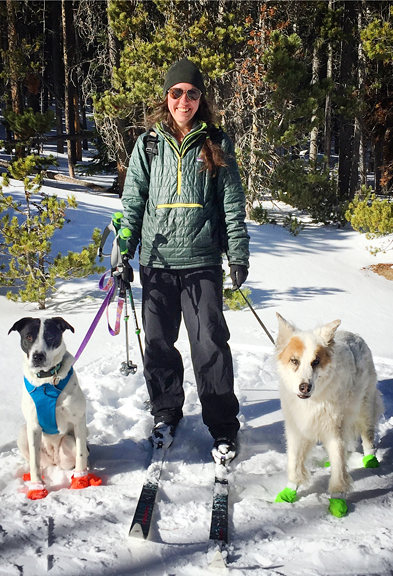nuts for hazelnuts!
Thursday, February 7th, 2019 Recipe: hazelnut pralines and hazelnut praline paste
Recipe: hazelnut pralines and hazelnut praline paste
I love the feeling of getting over the hump! My cold last month put me behind schedule on a few things that made the past couple of weeks a crush of work and deadlines that pushed up against Chinese New Year preparations. I managed to get it all done while sacrificing some sleep and exercise so we could leave for Crested Butte on the first day of the Chinese New Year. At least I did the “lucky” things for the Year of the Pig, which happens to be my year. Happy Chinese New Year, everyone! Now I can resume a normal pace of productivity and enjoy some time with my pack in the snow.
our spoiled pups enjoying their window benches in nederland

i kept the lunar new year celebration simple

taking advantage of a quiet powder day in crested butte

fluffy little stashes everywhere

yuki and neva as wind indicators

The recipe I’m sharing today came about through necessity. My first introduction to hazelnut praline paste occurred in my pastry skills program over a decade ago. It’s the kind of product you’ll find in the kitchens of professional bakers, candy makers, pastry chefs, pastry schools, and serious baking enthusiasts. Think of it as a rustic version of Nutella without any of the junk ingredients. Unable to find it in any local stores, my online search revealed hazelnut praline paste to be rather pricey unless I was willing to buy 11 pounds of it (I am not). I wondered aloud how hard could it possibly be to make my own? Apparently, not hard at all.
lemon juice, sugar, raw hazelnuts, water

Most people would probably substitute Nutella or skip the praline paste altogether, but I have a deep love of the stuff. I’d spoon it straight into my mouth if my adult brain didn’t override my 1970s child instincts. Hazelnut praline paste has a rich, smooth texture and a buttery, toasted nutty, burnt sugar flavor. To make it requires caramelizing sugar, coating the hazelnuts in the hot caramelized sugar, cooling the pralines, and then blitzing it to a paste in a food processor. While the process steps are simple, the technique requires some competency with caramelizing sugar. I even managed to brick a batch of hot sugar before remembering that a touch of acid (in this case, lemon juice) can help prevent seed formation during caramelization, especially at high altitude. One thing to note is that I usually use organic cane sugar, which is light brown, but I used white sugar in the photographs because I wanted to show it turning amber in color.
combine sugar, lemon juice, and water in a small saucepan

let it boil undisturbed until it turns deep amber

**Jump for more butter**

























